1. An Overview of Traffic in Vietnam
1.1. Overview of Traffic in Vietnamese Urban Area
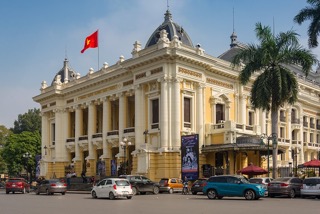 Traffic in Vietnam varies significantly between suburban and urban areas. In the suburban areas, like the Ha Giang loop, the traffic is generally calm, because there are fewer vehicles on the streets and the roads are broad. However, in urban cities, especially the center of Hanoi and Ho Chi Minh City, the traffic is known for its crazy traffic jams and overall chaotic style. Therefore, it is essential for tourists to be aware of and prepared for the traffic in Vietnam before visiting these areas.
>>>> Read more on how to book a taxi from Hanoi airport to Old Quarter!
Traffic in Vietnam varies significantly between suburban and urban areas. In the suburban areas, like the Ha Giang loop, the traffic is generally calm, because there are fewer vehicles on the streets and the roads are broad. However, in urban cities, especially the center of Hanoi and Ho Chi Minh City, the traffic is known for its crazy traffic jams and overall chaotic style. Therefore, it is essential for tourists to be aware of and prepared for the traffic in Vietnam before visiting these areas.
>>>> Read more on how to book a taxi from Hanoi airport to Old Quarter!
1.2. Traffic in Vietnam’s Problems:
Some major issues you might face with traffic in Vietnam are:- Traffic jams during rush hours: Every day from 6 AM-9 AM and from 4 PM-8 PM, the streets are completely packed with workers and students. The jams can even add up to 1-2 hours, so it is best to avoid traveling at these times.
- Complex road systems: Many streets in the citizens’ area, like Kham Thien Market Street in Hanoi, can be extremely small, dark, and complicated. The intersections on the main roads can also be confusing.
- Diverse vehicles: Expect motorbikes, cars, buses, bicycles, and trucks on every road. 70% of them will be motorbikes.
- Narrow sidelines: There are many shops, cafes, and street vendors who use the sidelines to park their motorbikes and leave their belongings. This makes walking on the streets rather difficult for tourists.
- Disregard of traffic in Vietnam rules: Lots of motorbikers are accustomed to violating the traffic rules, from crossing the red lights, and going up on the sidewalks, to even driving while smoking or using the phone. Be very careful to choose your transportation mode.
2. Means of Transportation for Tourists in Vietnam
2.1. Motorbikes
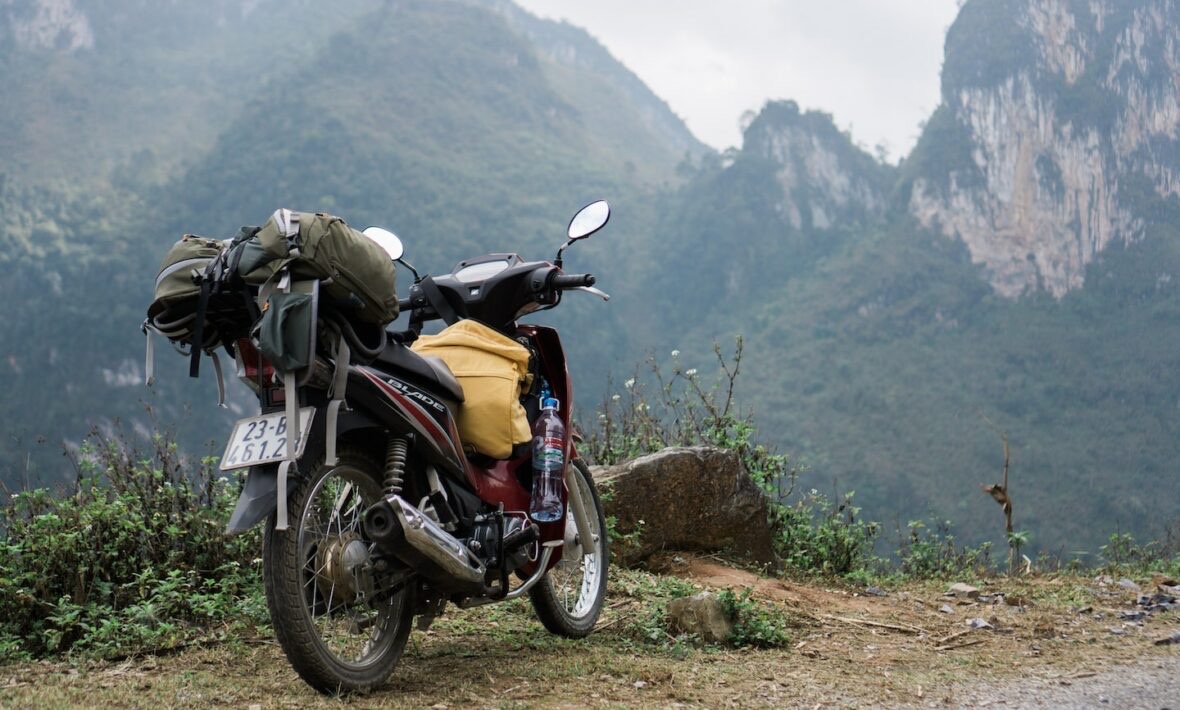 Motorbikes dominate traffic in Vietnam and offer a quick way to explore. Visitors can rent motorbikes for about 100,000–150,000 VND per day. Remember, proper licenses and helmets are mandatory.
>>> Check out our guide on Motorbike Rental in Vietnam if you are planning to ride by yourself!
Motorbikes dominate traffic in Vietnam and offer a quick way to explore. Visitors can rent motorbikes for about 100,000–150,000 VND per day. Remember, proper licenses and helmets are mandatory.
>>> Check out our guide on Motorbike Rental in Vietnam if you are planning to ride by yourself!
2.2. Cars
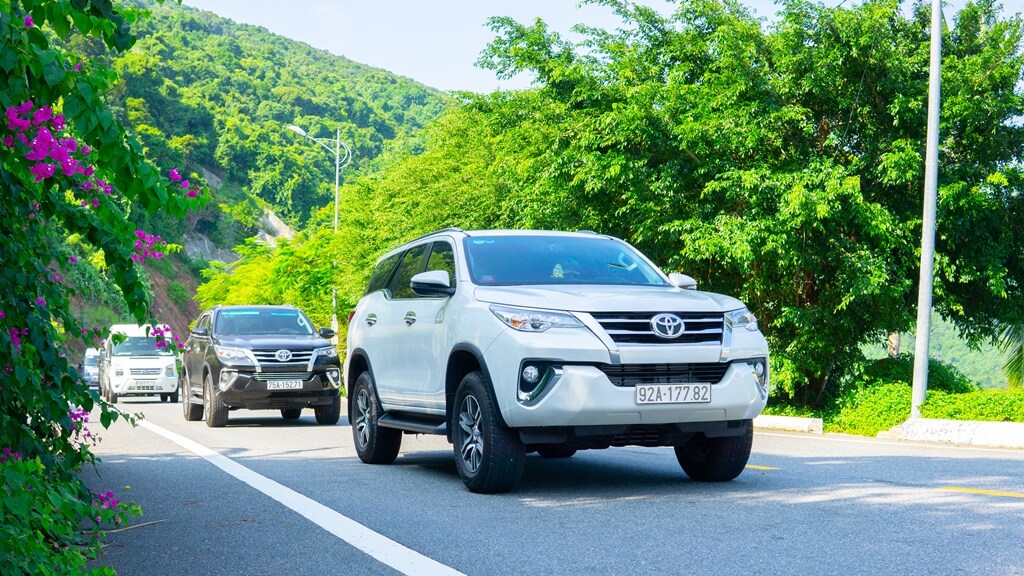 Private car rentals are a safer option, especially if you are traveling in a large group. However, it is also greatly costlier depending on the provider and the vehicle brand. If you are worried about navigating Vietnamese streets, you can also choose a driver-included service.
Private car rentals are a safer option, especially if you are traveling in a large group. However, it is also greatly costlier depending on the provider and the vehicle brand. If you are worried about navigating Vietnamese streets, you can also choose a driver-included service.
2.3. Ride-Hailing Services
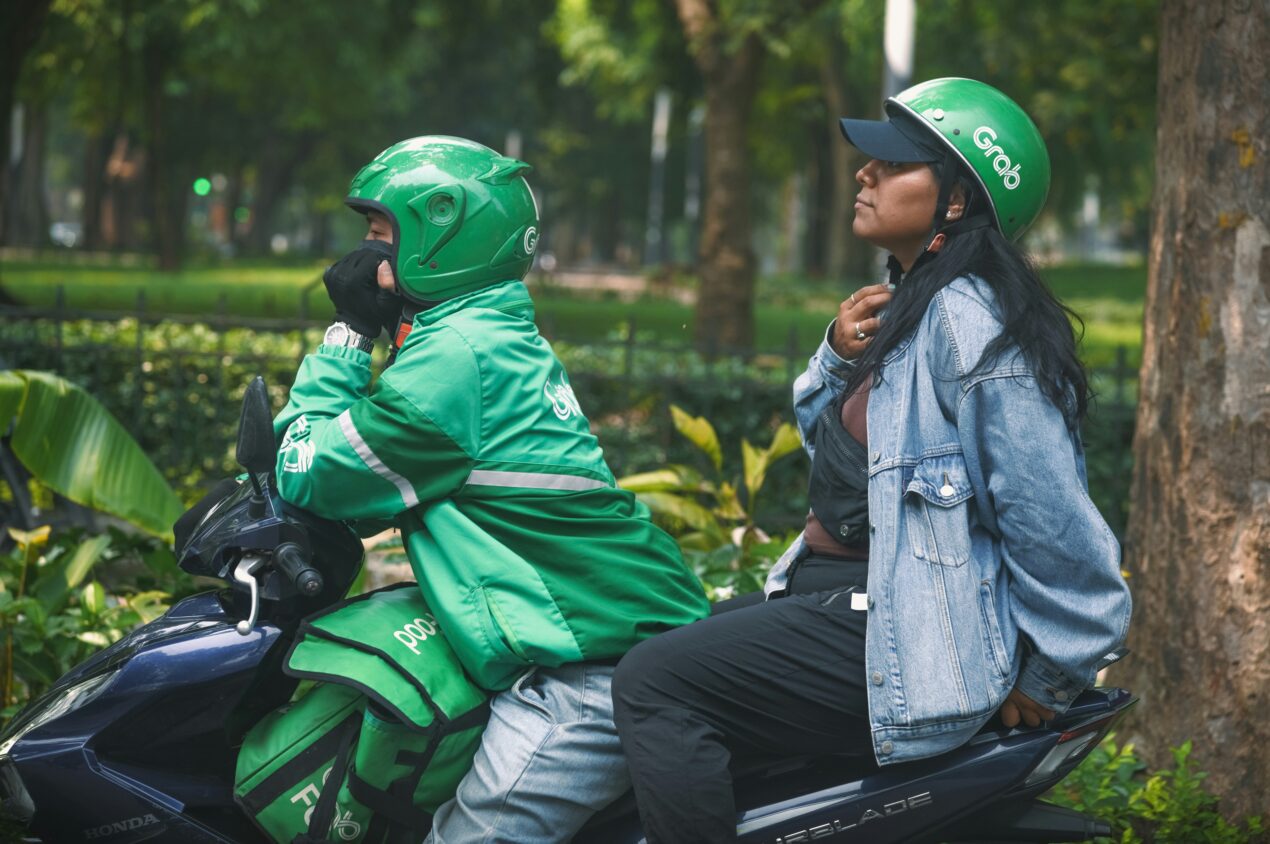 If you want an authentic motorbike experience but do not have a license, you can always choose ride-hailing services. Services like Grab, Be, and Xanh SM offer convenient and affordable rides as well as deliveries. Simply book through their mobile apps to get around the city with ease.
>>>> Read More: How To Use Grab In Vietnam: A Comprehensive Guide For Foreiners
If you want an authentic motorbike experience but do not have a license, you can always choose ride-hailing services. Services like Grab, Be, and Xanh SM offer convenient and affordable rides as well as deliveries. Simply book through their mobile apps to get around the city with ease.
>>>> Read More: How To Use Grab In Vietnam: A Comprehensive Guide For Foreiners
2.4. Buses
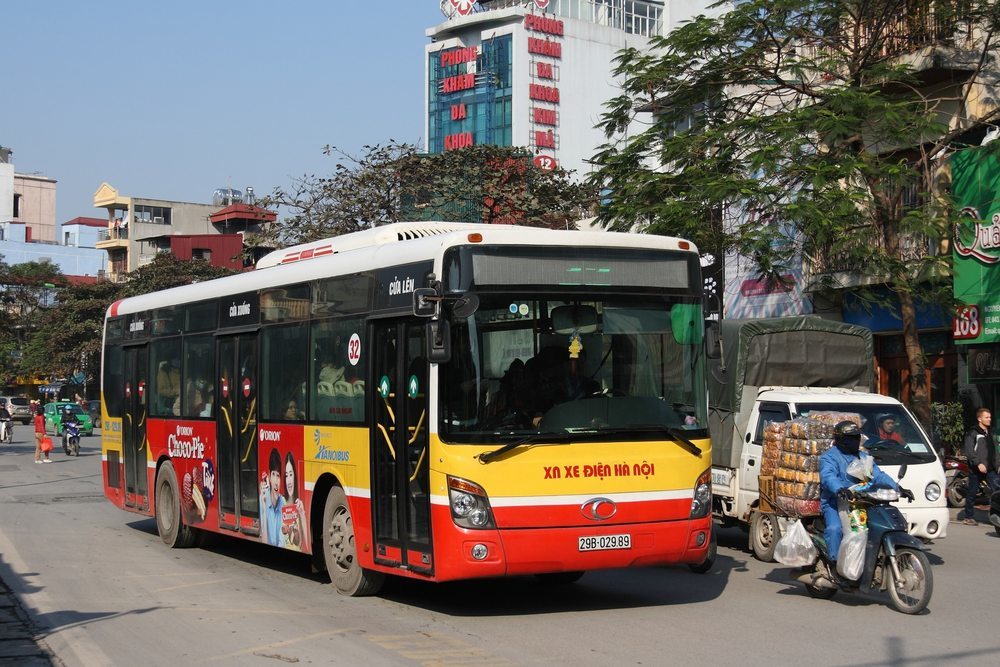 Vietnam’s public bus system is an economical and sustainable way to travel. You can check schedules online or via apps like Google Maps or Tìm Buýt. For longer journeys between cities, sleeper buses are a popular choice among travelers, offering reclining seats that allow you to rest comfortably during overnight trips. Many sleeper buses also provide amenities such as blankets, charging ports, and Wi-Fi, making them a convenient and budget-friendly option for exploring Vietnam.
Vietnam’s public bus system is an economical and sustainable way to travel. You can check schedules online or via apps like Google Maps or Tìm Buýt. For longer journeys between cities, sleeper buses are a popular choice among travelers, offering reclining seats that allow you to rest comfortably during overnight trips. Many sleeper buses also provide amenities such as blankets, charging ports, and Wi-Fi, making them a convenient and budget-friendly option for exploring Vietnam.
2.5. Trains
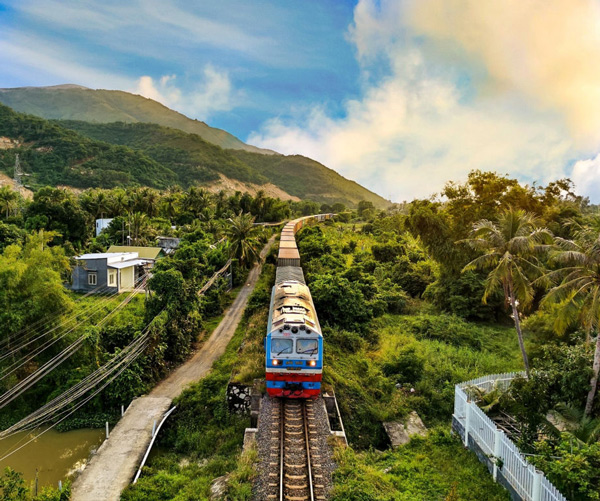 The Vietnam railway system connects major cities and offers scenic routes. Their services range from seats to even private rooms with beds if you are on a long trip. Tickets are reasonably priced and can be booked online or offline at stations.
The Vietnam railway system connects major cities and offers scenic routes. Their services range from seats to even private rooms with beds if you are on a long trip. Tickets are reasonably priced and can be booked online or offline at stations.
2.6. Metro lines
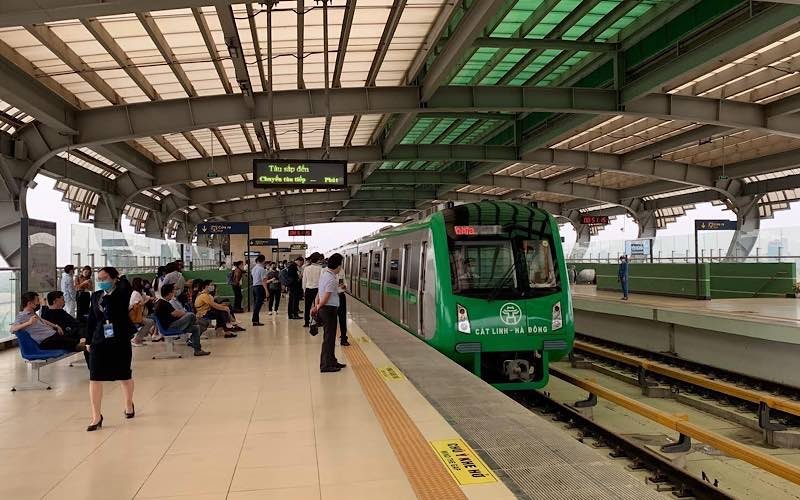 If you are in Hanoi, the Cat Linh – Ha Dong metro system is a great choice to explore the capital city. And in Ho Chi Minh City, the Ben Thanh – Suoi Tien metro line (also known as Metro Line 1) is a great choice. Tickets are only around 8,000 to 15,000 VND (less than a dollar) per trip, offering a modern and efficient way to travel around all districts in the city, avoid traffic jams, and observe the city while sitting on the train.
If you are in Hanoi, the Cat Linh – Ha Dong metro system is a great choice to explore the capital city. And in Ho Chi Minh City, the Ben Thanh – Suoi Tien metro line (also known as Metro Line 1) is a great choice. Tickets are only around 8,000 to 15,000 VND (less than a dollar) per trip, offering a modern and efficient way to travel around all districts in the city, avoid traffic jams, and observe the city while sitting on the train.
3. Traffic in Vietnam: Rules
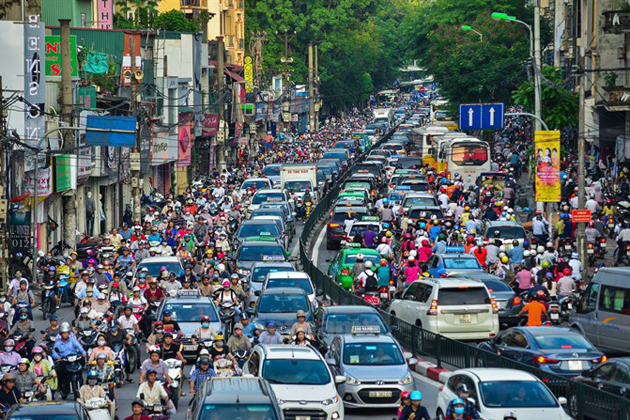 To ensure safety and compliance while navigating Vietnam’s traffic, follow these key rules:
To ensure safety and compliance while navigating Vietnam’s traffic, follow these key rules:- Drive on the right side of the road: In Vietnam, traffic moves on the right-hand side, which may differ from the standard in some other countries, so be sure to adjust accordingly. Exercise extra caution at intersections, as not all drivers strictly follow traffic rules.
- Prepare a Vietnam SIM Cards: Not only will this help you in booking your ride in Vietnam more easily, but a SIM card will also give you access to the data in the country, which is useful for navigating the road!
- On highways or main roads: If there are no sidewalks available, it’s safest to walk on the side facing oncoming traffic. This allows you to see approaching vehicles, giving you time to react if needed. Once a vehicle passes you, the immediate danger is usually behind, ensuring a safer walking experience.
- Motorbikes must not exceed 50cc for unlicensed drivers, and helmets are mandatory. If you don’t have a local or international license, you’re restricted to motorbikes under 50cc or electric scooters. Additionally, helmets are a legal requirement for all motorbike riders and passengers. Wearing one not only ensures safety but also helps avoid fines.
- Respect speed limits and avoid using alcohol, smartphones, or headphones while driving: Speed limits vary depending on the area, typically around 50 km/h in urban areas and 90 km/h on highways. Drunk driving and distractions like texting or wearing headphones are also strictly prohibited and heavily fined.
- Carry a valid driver’s license or an International Driving Permit (IDP): Whether in Hanoi or in the high mountains of the Ha Giang Loop, foreigners driving in Vietnam must possess a valid IDP or a locally issued license. Always carry these documents, as traffic police may conduct spot checks. Having proper paperwork also simplifies situations like accidents or legal disputes.
4. Tips to Survive Traffic in Vietnam
4.1. Crossing the Road
The key to crossing the road in Vietnam is to walk at a steady pace and avoid sudden movements, which helps drivers anticipate your path. Make eye contact with oncoming drivers or hold up your hand to signal your intentions. Avoid rushing or waiting for a complete stop in traffic – it rarely happens in urban areas, so confidence and consistency are crucial.4.2. Keep Your Belongings Safe
Pickpocketing and snatch thefts are pretty common, particularly in busy cities like Ho Chi Minh City. Always keep your belongings close, preferably in a crossbody bag or a backpack worn in front. For extra safety, store photocopies of important documents such as your passport or visa in a separate place in case of theft. Avoid displaying valuables like expensive jewelry, phones, or cameras openly.4.3. Dealing with Traffic Accidents
If you’re involved in a traffic accident, stay calm and call 113 for police assistance. For medical emergencies, call 115. If injuries occur, seek help immediately and try to identify local clinics or hospitals nearby. Be aware that language barriers may arise, so having essential phrases or a translation app can be useful. Always have travel insurance to cover medical expenses or damages before you go on your trip. >>>> Note down these Hospitals in Hanoi for a safe Vietnam travel experience!Conclusion on Traffic in Vietnam
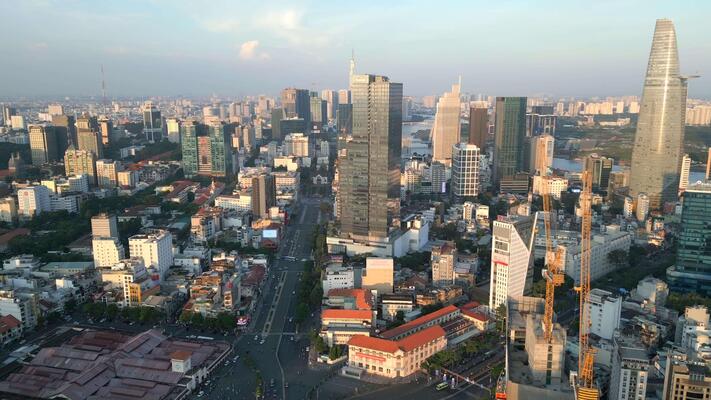 Navigating Vietnamese traffic can be scary, but when you are familiar with the traffic in Vietnam, you are all set for an exciting trip. Pack your bags and discover Vietnam’s breathtaking nature, rich culture, delicious cuisine, and friendly people. With a team of experienced local guides, YESD Travel will certainly guide you through the crowded streets, whether for the best Hanoi street food or through the rocky roads of the Ha Giang loop. Contact us to discover more!
Navigating Vietnamese traffic can be scary, but when you are familiar with the traffic in Vietnam, you are all set for an exciting trip. Pack your bags and discover Vietnam’s breathtaking nature, rich culture, delicious cuisine, and friendly people. With a team of experienced local guides, YESD Travel will certainly guide you through the crowded streets, whether for the best Hanoi street food or through the rocky roads of the Ha Giang loop. Contact us to discover more!